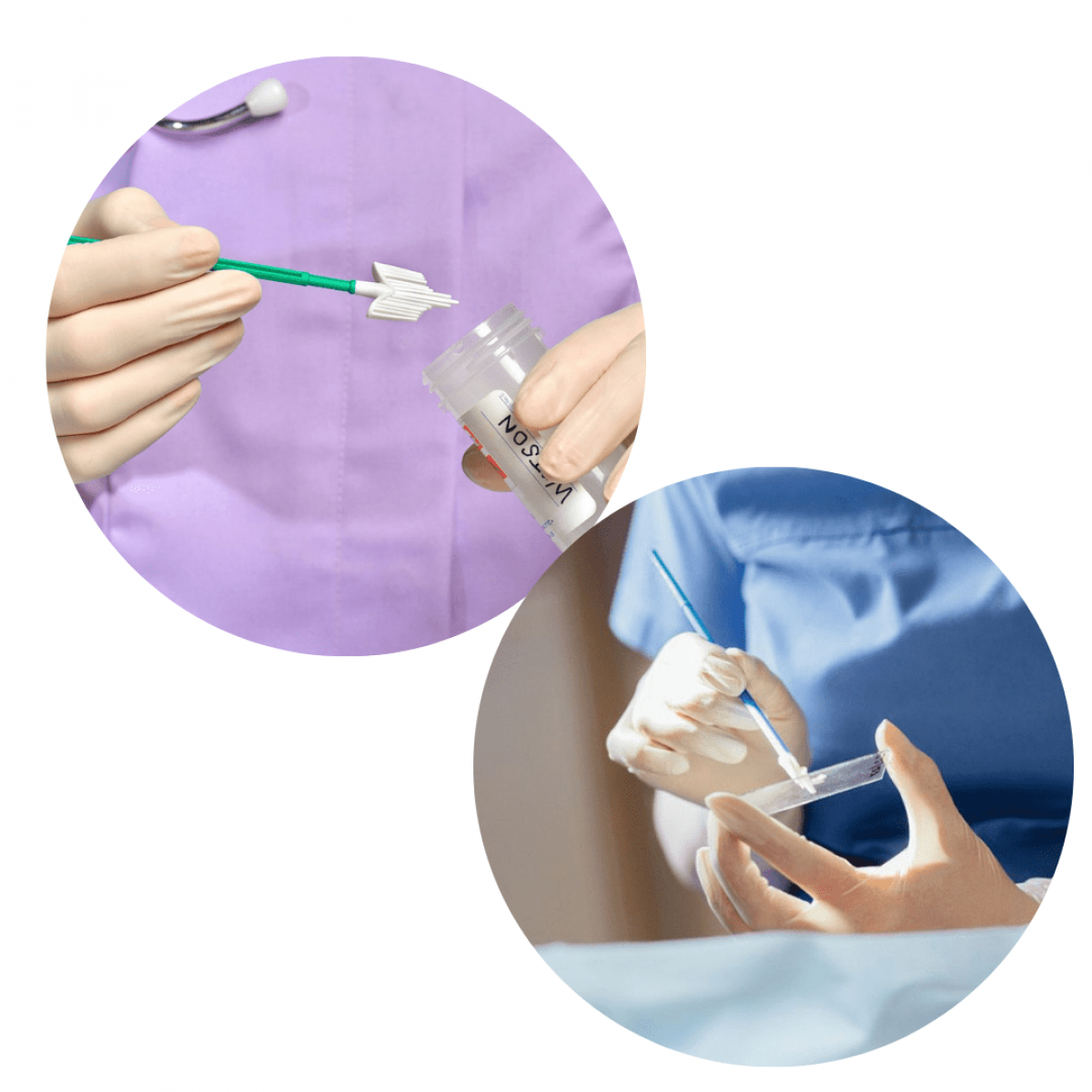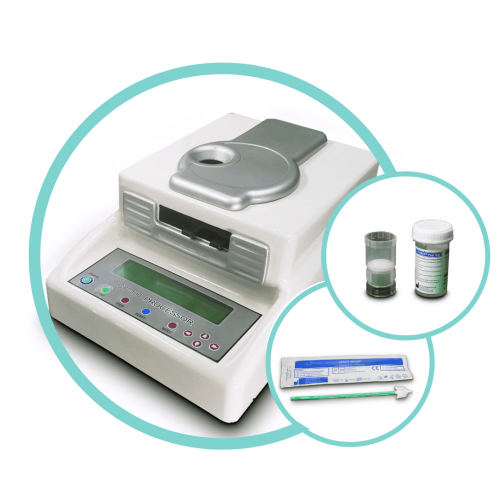Liquid-based cervical cytology was developed to improve the diagnostic reliability of Papanicolaou (Pap) smears. Two methods are used for cervical cytology. The first one is the conventional Papanicolaou (PAP) smear and the second one is liquid-based cytology (LBC). Therefore, in this study, we compared the diagnostic utility of these two techniques for detecting cervical epithelial lesions.
After the introduction of cervical cancer screening programs with cervical cytology, a marked decline in deaths secondary to cervical cancer was observed in developed countries. Two methods are used for cervical cytology. The first one is the conventional Papanicolaou (PAP) smear and the second one is liquid-based cytology (LBC). Although various studies in western countries established the role of LBC in cervical cancer screening, no large-scale study was conducted in our population to compare the two techniques for cervical cancer screening. Therefore, in this study, we compared the diagnostic utility of these two techniques for detecting cervical epithelial lesions.
Liquid-based cervical cytology was developed to improve the diagnostic reliability of Papanicolaou (Pap) smears. Conventional Pap smears can have false-negative and false-positive results because of inadequate sampling and slide preparation, and errors in laboratory detection and interpretation. However, liquid-based cytology rinses cervical cells in preservatives so that blood and other potentially obscuring material can be separated. It also allows for additional testing of the sample, such as for human papillomavirus (HPV).
In the study conducted, it was documented that the disease detection rate for squamous epithelial abnormalities was significantly higher using LBC than the conventional PAP smear. In addition, LBC has several other advantages over PAP smear as the material can be used in molecular studies, such as the detection of hrHPV. Moreover, in the long run, LBC is also cost-effective in mass cervical cancer screening, as LBC is needed less frequently than the conventional PAP smear. Therefore, we recommend the widespread use of LBC for cervical cancer screening in the population. A comparison of smears prepared using LBC and conventional PAP smear is shown in the figure.

Comparison of conventional PAP smear and LBC for cervical cytology:
- Conventional PAP smear at 100X magnification shows overlapping squamous cells with a lot of inflammatory and hemorrhagic background, making individual cellular details difficult to interpret.
- LBC at 100X magnification depicts widely dispersed squamous cells without any inflammation or hemorrhage in the background, resulting in clear individual cellular details.
Several types of examinations have their advantages and disadvantages. Here are the differences between LBC and Pap Smear:
|
No |
Testing with LBC (liquid-based cytology) |
Testing with Pap Smear |
|
1 |
Cells obtained from uterine mucus |
Cells obtained from cervical mucus |
|
2 |
Cells are immersed in the solution, nothing is discarded |
Directly rubbed on the glass object, including mucus and blood that may be involved |
|
3 |
The sample is sent to the lab for processing |
Some of the cells are wasted |
|
4 |
Cells are well scattered on the slide, clean and clear for assessment |
Sprayed fixative and assessed under a microscope |
|
5 |
Increase the chance of getting abnormal cell |
Many factors can interfere with the assessment |
PT Isotekindo Intertama is a distributor of the CY-PREP ™ CY-100 Processor, a cervical pre-cancer cytology product using the accurate LBC method. CY-PREP ™ CY-100 Processor products are as follows:
A. Sampling using CY-PREP ™ Pap Test CERVIX-BRUM ®
Benefit:
1. The sampling device is sterile, specially packaged it safe for the patient, and designed to take samples
of both endo and ectocervical at the same time
2. Designed to simplify sampling and reduce sampling inconvenience
B. Liquid media to contain, transport, and preserve test samples using CY-PREP™ Pap Test Preservation Solution
Benefit:
- Protect the sample, hold for 3 weeks at room temperature (15-30 °C). Samples are safe from dryness & damage
- Minimizes the risk of important samples being left in the sampling device
- Collect all cervical samples so that all sample cells can be examined
- Provide enough test samples so that the patient does not need to re-samples for follow-up tests
C. Separating the inspection target material from lenders and dirt using a dual filter
Benefit:
- Make a thin layer of preparation
- Cells become clearer when examined because the cell staining process becomes more perfect and adheres better
D. Glass slide for sample attachment using IHC link glass slide
Benefit:
- Make a thin layer of preparation
- Cells become clearer when examined because the cell staining process becomes more perfect and adheres better
Reference:
- Hashmi AA, Naz S, Ahmed O, Yaqeen SR, Irfan M, Asif MG, Kamal A, Faridi N. Comparison of Liquid-Based Cytology and Conventional Papanicolaou Smear for Cervical Cancer Screening (2020): An Experience From Pakistan. Cureus.
- Insert Pack CY-PREP ™ CY-100 Processor.
- Nishio H, Iwata T, Nomura H, et al.: Liquid-based cytology versus conventional cytology for detection of
uterine cervical lesions(2018): a prospective observational study. Jpn J Clin Oncol. - Pankaj S, Nazneen S, Kumari S, et al. (2018): Comparison of conventional Pap smear and liquid-based cytology: a
study of cervical cancer screening at a tertiary care center in Bihar. Indian J Cancer.







